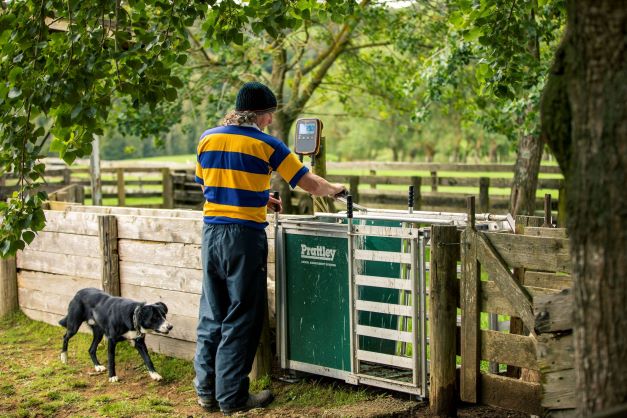Benefits of using apps and data on your farm
Sunday, 10 July, 2022

In his time as Territory Manager for Gallagher Animal Management, Darren Smith has seen farmers battle many elements outside of their control. Mother Nature is the obvious one. Market fluctuations and escalating feed prices are two others. Sometimes these factors conspire to make life difficult. Smart farming technology like apps can help farmers make the right decisions in tough times.
“I operate in the greater Waikato, and we’ve seen some very dry conditions over the last six months. Yes, we’ve had rain of late, but we needed that four weeks earlier when the heat would have helped the grass grow. But that’s not what we got, so farmers have been forced to make some tricky calls about feed. To help animals maintain condition, some have bought in extra feed and supplements. Others have dipped into the feed they were saving for winter. Both approaches come at a high cost, so my job is to give these farmers the technology that will tilt the odds back in their favour.
“As sophisticated as Gallagher’s technologies are, the things we help farmers with are pretty simple: We help animals stay where they’re meant to be, we help farmers monitor their water supply, and we weigh and track animals in ways that help farmers make good decisions, from feeding to culling. That’s what Gallagher does, and my job is to put that smart technology in farmers’ hands. Literally.”
Make the numbers work for you
There’s a saying: ‘If you can’t measure it, you can’t manage it’. Darren reckons it’s more like, ‘If you can’t measure it, recall it, compare it, and understand it you can’t manage it. A lot of farmers weigh their animals, but not all of them capture and recall the data in ways that help them make good decisions. Many record the weight of an animal and use that single datapoint to decide what to do next with it. But if they weighed that animal a few weeks earlier, they need to recall that previous number to properly understand this latest stat.
“Has the animal lost weight or put on weight? If it has put on weight, how much over that period, and how does that gain compare to the rate of gain for the rest of the herd? If she’s behind, is it because she’s sick or does she have a history of slow growth? That’s where the latest weighing systems are fantastic. They automatically tell you the difference between weigh-ins and offer a range of useful stats to help a farmer make accurate decisions about an individual animal.”
Phones are key
Darren believes that today’s mobile phones have made technology easier for farmers, even farmers less comfortable with new apps. "Some older farmers are reluctant to try new tech, but most of them are fine with driving their smartphones. They intuitively click, tap, swipe and drag to pull up the information they want – news, sports, weather, even banking. They use apps all the time. If they can work their smartphone, they can easily use any Gallagher app, because our systems link to a farmer’s phone and operate with the same touchscreen motions.”
Easy-to-use information
Darren has been a Territory Manager for 16 years. He has nothing but sympathy for farmers who fear that new technologies will complicate things and bog them down. To ease these fears, Darren points farmers to technology they already use. "Think of the weather apps we use on our phones. Weather is a complicated, detailed science, but when we open the app, all we see is a ‘Monday, 8am, a rain graphic and 18 degrees’. That’s all we need to make a decision about that morning.
“That’s how the Gallagher apps work. Whether it’s weighing or fencing, or the water usage app that’s in the pipeline , we give you the information you need in a way that makes complete sense. Like the weather app, they’re designed to make life easier for farmers, to help them work smarter.”